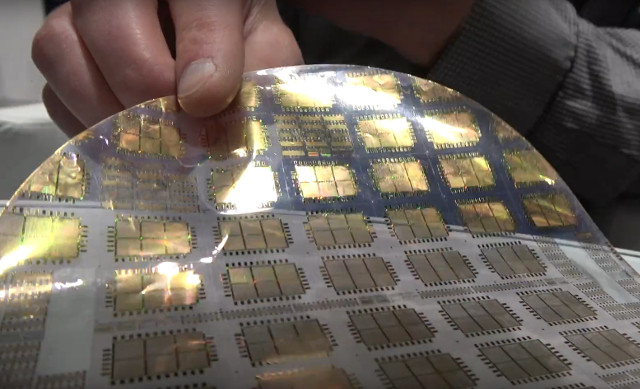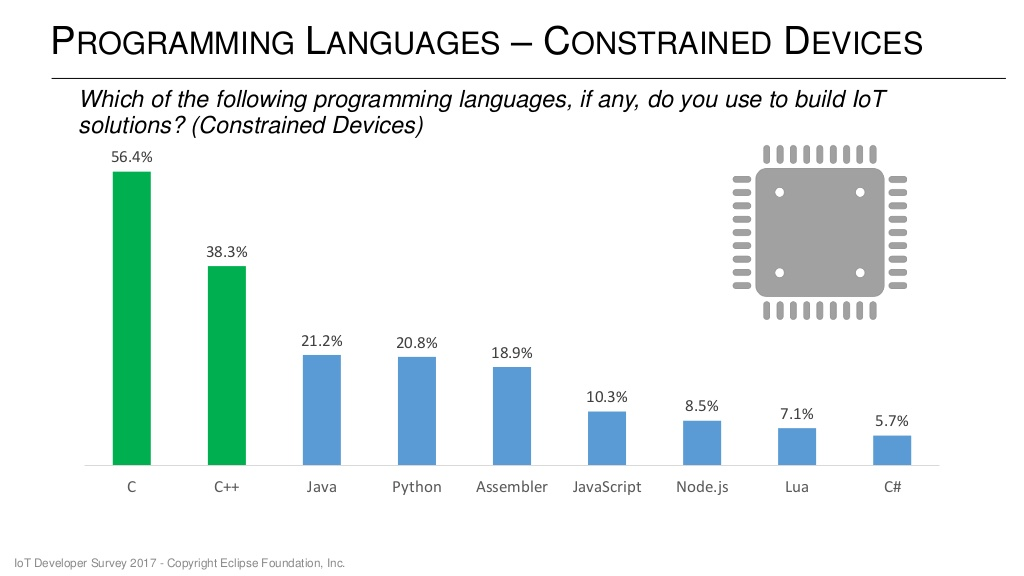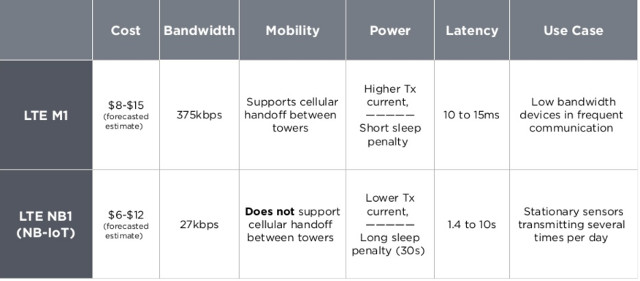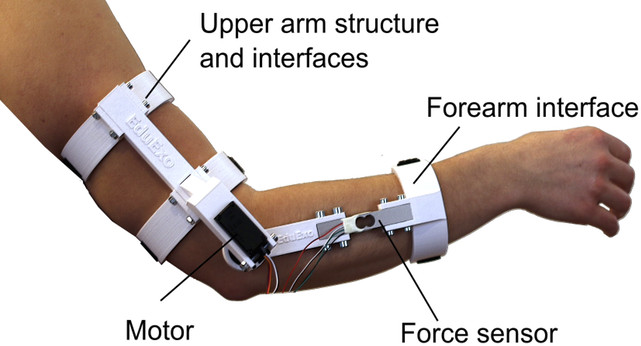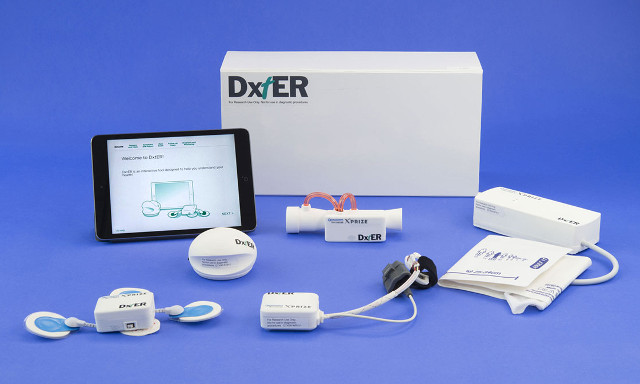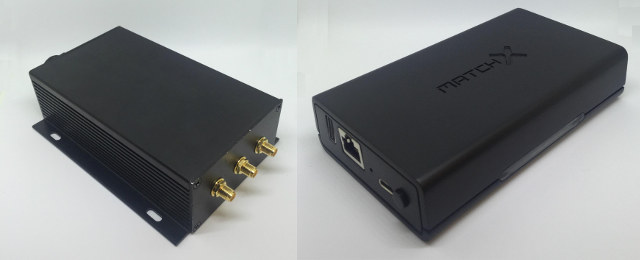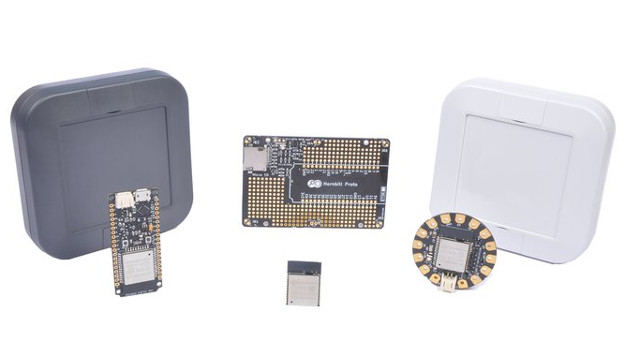Electronics manufacturing now relies on silicon wafers, and it works great for many applications. However, some other applications require or benefit from a cheaper price, thinner circuits, and flexibility, and PragmatIC addresses all those three issues with technology to print electronics circuits on plastic sheets. The technology is said to costs less than 1/10th cost of silicon, with the circuit printed on 10 μm thick flexible plastic “wagers” with support for 10 layers. Circuit starts from basic gates up to ARM Cortex M0/M0+ chip as shown above. Simpler circuits are currently sold for as low as $0.01, but the area for Cortex M0 MCU is 1cm2, and a bit too big for commercial applications, so they plan on shrinking the process to make it commercial viable. ARM is an investor in the company, and PragmatIC is ramping production capacity with the ability to manufacture on billion plastic chips/circuits in 2018. […]
Top Programming Languages & Operating Systems for the Internet of Things
The Eclipse foundation has recently done its IoT Developer Survey answered by 713 developers, where they asked IoT programming languages, cloud platforms, IoT operating systems, messaging protocols (MQTT, HTTP), IoT hardware architectures and more. The results have now been published. So let’s have a look at some of the slides, especially with regards to programming languages and operating systems bearing in mind that IoT is a general terms that may apply to sensors, gateways and the cloud, so the survey correctly separated languages for different segments of the IoT ecosystem. C and C++ are still the preferred languages for constrained devices, and developers are normally using more than one language as the total is well over 100%. IoT gateways are more powerful and resourceful (memory/storage) hardware, so it’s no surprise higher level languages like Java and Python join C and C++, with Java being the most used language with 40.8% […]
The Future of Cellular IoT Explained – LTE M1, LTE NB-IoT, eSIM, and Battery Life Hype
Telecom companies also want their share of the IoT business, but with 2G to 4G cellular technology often being too power hungry and/or expensive for this market, 2G on-going – or upcoming – sunset depending on your location, LTE Cat M1 and LTE Cat NB1 (aka NB-IoT) standards have been developed, and used in products like Pycom FiPy board, and SARA-R4 and SARA-M2 modules. If you want to have an overview learn about the new LTE IoT standards and the future of cellular IoT, Particle has published a useful presentation – embedded below – dealing with both, as well as eSIM (Embedded SIM), 2G sunset, and battery life expectations. The main takeaways from my reading of the presentation: LTE NB1 is better suited for low power stationary sensors transmitting a small amount of data a few times a day. Requires new hardware and software LTE M1 can be used for […]
EduExo DIY Robotic Exoskeleton Kit is Arduino Powered, 3D Printable, Designed for STEM Education (Crowdfunding)
Robotic exoskeletons are used for medical purposes such as helping with the rehabilitation of stroke patients, or enable paraplegics to walk again, as well as in the work place to assist people lifting heavy objects. While it’s possible to learn about the theory about exoskeleton technology, practical experience may help grasping all concepts better. However, there are not many courses available, and exoskeletons are usually expensive, so Volker Bartenbach, PhD at ETH in Zürich, has decided to created EduExo robotic exoskeleton kit for education purpose. The EduExo hardware is based on off-the-shelf components like an Arduino UNO board, a motor, and a force sensor, as well as a rigid exoskeleton structure and cuff interfaces. The latter is optional as you can get the kit without it, and will instead receive the STL files to 3D print the parts yourself. There’s also a handbook to help you get started in several […]
Qualcomm Tricorder XPRIZE Selects Two Winners for Commercial Medical Tricorders
Healthcare takes around 10% of worldwide GDP, and while in some cases an increase in the healthcare to GDP ratio means better care for people, in other cases it may lead to a decrease in the population’s living standards. There are political, business, and legal issues involved in the costs, but overtime I’m confident that technology can both improve care and lower the costs, in some instances dramatically, especially if open source designs become more common, and there’s some work in that respect with open source projects for prosthetics, opthalmoscope, and even surgical robots. Some commercial projects also aim(ed) to lower the costs of diagnosis tools such as Sia Lab’s medical lab dongle or Scanadu medical tricorder. The latter project sadly did not manage to pass FDA approval, and the company will stop supporting it on May 15, 2017, but that does not mean others have given up on developing […]
MatchX LoRaWAN Solution Supports up to 65,535 Sensor Nodes per Gateway
MatchX is a startup with offices in Chicago, Shenzhen, and Berlin, that provides a complete LoRaWAN solution with their MatchBox gateway based on SX1301 concentrator and Mediatek MT7628N processor, as well as MatchStick, MatchModule, and MatchCore sensors with up to 65,535 of those connecting to a single gateway. MatchBox LoRaWAN/WiFi/GPRS/GPS Gateway MatchBox specifications: Processor – Mediatek MT7628AN MIPS WiSoC @ up to 580 MHz System Memory – 128MB DDR2 RAM Storage – 16MB FLASH Connectivity LoRa – Semtech SX1301 + 2x SX1257@+27dbm Output Power; 470/868/915Mhz frequency range, -146dBm sensitivity 10/100M Ethernet 802.11n 2×2 WiFi @ 300 MHz Optional GPRS via SIM800H, 85.6 kbps (downlink/uplink) + micro SIM card slot GPS via UBlox Max 7C Antennas – 2x u.FL antennas for WiFi, u.FL or chip antenna for LoRa, GPS and GPRS modules USB – 1x USB 2.0 port, 1x USB type C exposing 4 or 6 GPIOs and UART Misc – […]
ESP8266, Mongoose OS & Grove Sensors – An Alternative Solution for Hackathons
CNXSoft: This is a guest post by Cesanta If you walked into any Hardware hackathon over the last year, you would see they are about innovation and bringing new ideas to this world and most of them are centered around the connected devices nowadays. However, just walk the floor, talk to the teams and you can quickly see an elephant in the room. The Hackathons are about connected devices, but with the ‘recommended’ and frequently sponsored hardware distributed to the teams such as Intel Galileo, Raspberry Pi, etc…. developers may struggle for a long time to even connect it to the cloud! Not to mention the innovation is usually hindered by a tedious environment setup which takes hours, things to learn about the specific hardware and how it can be programmed using low level languages. So many teams spent most of the time fighting with those issues and oftentimes still […]
Hornbill ESP32 Development Boards Come with an Optional IP67 Rated Enclosure (Crowdfunding)
While there are plenty of ESP32 development boards, and prices have recently plummeted, getting a case for your project can still be a problem especially if you plan to use it outdoor, as you need to protect your hardware from rain and dust. Hornbill project offers two ESP-WROOM-32 based boards, a prototype board, and an IP67 certified case that could be useful for outdoor use. Hornbill ESP32 Development Boards Let’s start by checking the boards available starting with ” Hornbill ESP32 Dev” board with the following specs: ESP-WROOM-32 module with WiFi, Bluetooth LE, FCC, CE, IC, MIC (Telec), KCC, and NCC certifications I/O headers 2x 19-pin headers with GPIOs, I2C, UART, SPI, ADC, DAC, touch interface, VN/VP, 5V, 3.3V and GND Breadboard-friendly Debug – Built-in CP21XX USB-to-serial Power Supply – 5V via micro USB port, battery header + single cell LiPo charger Dimensions – TBD ESP32 Minima is also based […]


